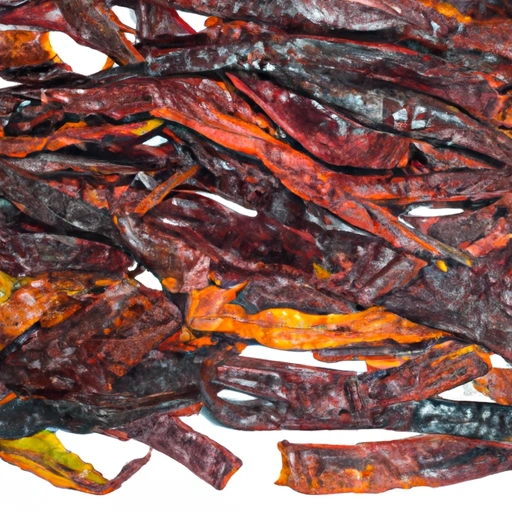Dried Chile Pepper
Description

Dried chile peppers are a staple ingredient in many cuisines around the world, valued for their ability to add heat, depth, and complexity to a wide variety of dishes. These peppers are harvested when ripe and then dried to preserve their flavor and heat. The process of drying not only extends the shelf life of the chiles but also intensifies their taste. Dried chile peppers can range from mild to extremely hot, and they come in various shapes, sizes, and colors, each with their unique flavor profile.
Common uses
Dried chile peppers are commonly used to add spiciness to dishes, to create rubs and marinades, and as a key ingredient in spice blends such as chili powder, curry powders, and various ethnic spice mixtures. They can also be rehydrated and used in sauces or stews, or ground into a paste or powder for seasoning purposes.
Nutritional value
Calories
Typically, a 1 tablespoon (7 grams or 0.25 oz) serving of dried chile peppers contains about 24 calories.
Protein
Dried chile peppers provide about 0.9 grams of protein per 1 tablespoon serving.
Fat
These peppers are low in fat, with just about 0.4 grams per tablespoon.
Carbohydrates
There are approximately 4 grams of carbohydrates in a 1 tablespoon serving, most of which are dietary fibers.
Vitamins
Dried chile peppers are an excellent source of Vitamin A, and they also contain some Vitamin C and B Vitamins.
Minerals
They provide minerals like potassium, magnesium, and iron.
Health benefits
Dried chile peppers are known for their capsaicin content, which has been associated with pain relief, weight loss, and improved heart health. The vitamins and minerals present in the peppers also contribute to overall wellness, supporting immune function and bone health.
Potential risks
While dried chile peppers offer various health benefits, they can also pose risks for individuals with a sensitive digestive system, leading to heartburn or gastric irritation. Additionally, excessive consumption can result in capsaicin-induced dermatitis or respiratory discomfort.
Common recipes
Dried chile peppers are used in an array of recipes, from classic chili con carne and hot sauces to ethnic dishes like Indian curries, Mexican moles, and Szechuan stir-fries.
Cooking methods
They can be toasted, soaked, crushed, or ground, depending on the desired flavor and texture. Toasting brings out their oils and flavors, while soaking allows for easier blending into pastes and sauces.
Pairing with other ingredients
Dried chile peppers pair well with ingredients like chocolate, lime, garlic, onion, cumin, and meats. They also complement legumes, grains, and vegetables, adding a burst of flavor and heat.
Summary
Dried chile peppers are a versatile and flavor-packed ingredient, cherished in kitchens worldwide for their ability to elevate the taste of food with their heat and complexity. Whether ground into powders, soaked for sauces, or used in their whole form, they add an unmistakable zest to an array of dishes. Remember to handle with care, as their capsaicin content can irritate skin and mucous membranes. Enjoy the fiery kick they bring to your culinary creations!